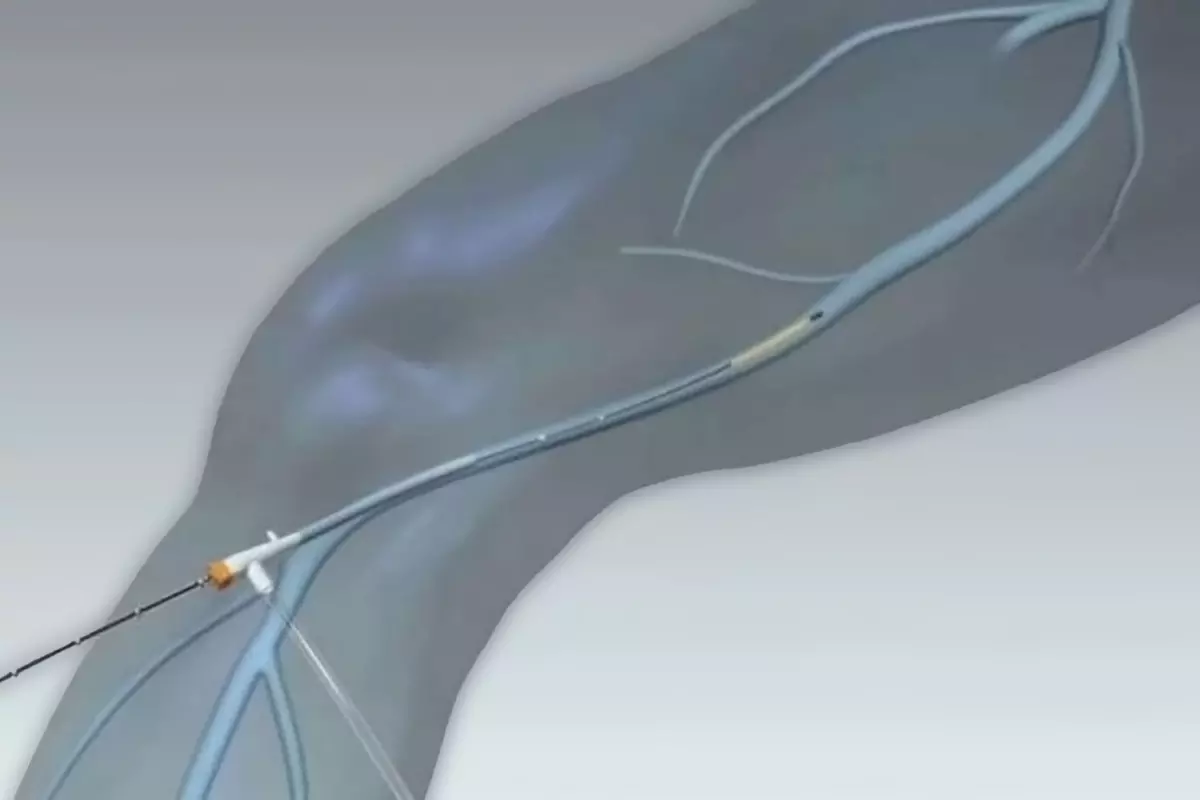Early detection of venous disorders: observe visible changes!
VENENCLINIC St. Gallen
9000 St. Gallen
VENENCLINIC Zurich
8004 Zurich
VENENCLINIC Chur
7000 Chur
VENENCLINIC Engadin
7513 Silvaplana

In contrast to the vein-preserving CHIVA method or the conventional surgical procedure, the VNUS Closure® method uses radio waves to shrink the veins from the inside, similar to ELVeS laser therapy.
Dr. Linde himself was involved in the pioneering studies on this new technique at the end of the 1990s and has since gained a great deal of experience with the VNUS Closure® method. It was he who first brought this procedure to Switzerland in 2001. As an expert, he has reported on this topic in all major health programs such as PULS or "Sprechstunde Gesundheit" and has also been a sought-after guest speaker at numerous international congresses.
The procedure is performed on an outpatient basis and usually under local anesthesia. A typical procedure begins with an ultrasound scan of the varicose vein to determine its course. This allows the optimal position for inserting the closure catheter to be found.
The procedure then begins: the patient lies on the couch in a light twilight sedation, feeling nothing of the procedure. The Closure Catheter is inserted into the vein and pushed up to the uppermost section of the vein. Local anesthesia (tumescent anesthesia) is then usually injected around the vein. This numbs the leg, and the blood is squeezed out of the vein. The fluid surrounding the vein forms a protective layer for the adjacent tissue against the heat as soon as the catheter begins to emit radio wave energy. The non-invasive ultrasound method is used to check the optimum position of the catheter tip, after which the radiofrequency generator can be activated. The heating coil at the tip of the catheter heats the vein wall to a target temperature of normally 110°C. With the ClosureFast™ catheter, the vein is ablated in 7cm long segments in treatment cycles of 20 seconds, causing the vein to shrink and close. During this phase, which usually lasts 3 to 5 minutes, the radiofrequency generator constantly adjusts its power to maintain the target temperature on the vein wall. This results in effective shrinkage of the collagen in the vein wall and the vein is sealed along its entire length. A groin incision is not required and the painful bruising that is common with conventional operations does not occur.
The VNUS Closure® method is a revolution in varicose vein treatment and a gentle alternative to conventional vein operations. The treatment is performed under local anesthesia, so there is no need for a hospital stay and normal activities can be resumed on the same day. It is also not absolutely necessary to wear compression stockings after the treatment. Our own experience of over 10 years and major international studies show that the durability of this technique has been proven. As a rule, over 90% of the treated veins can no longer be detected after a few weeks following a single procedure. The body has broken them down.
At the VENENCLINIC, the VNUS Closure® procedure is usually combined with the hook method and foam sclerotherapy. This not only achieves an excellent aesthetic result, but also a maximum functional result.
Cost point: The treatment of veins on one leg always involves a combination of VNUS Closure® radio wave therapy and the crocheting out of smaller side branches. The latter is a treatment that must be covered by health insurance because it is a medical condition. There are items within the scope of basic insurance under TARMED that can be billed for crocheting (phlebectomy). The shrinking of large veins requires the use of a disposable material, the ClosureFast™ catheter, which is never covered by health insurance. The cost for this is CHF 1000.00 per leg, in some cases 2 catheters must be used.
Helsana health insurance covers the entire treatment (including the catheter) if the patient has semi-private or private insurance. SWICA covers 80% of the total costs if the patient has semi-private or private insurance. A few other health insurance companies pay a share - depending on the insurance status. We will clarify this with you on a case-by-case basis when you come to us for your initial examination. The health insurance company always pays for the initial examination of the veins as well as the follow-up checks.
VNUS ClosureFast™ Sandhofer www.sandhofer.at
Prof. Dr. med. T. Pröbstle, who together with Dr. M. Sandhofer introduced the endoluminal laser application for veins (2001), is also the world's first user of the innovative VNUS ClosureFast™ procedure.
We understand that an aesthetic treatment needs to be carefully considered. We are therefore happy to take the time to answer all your questions during a no-obligation initial consultation. Arrange your consultation appointment at one of our VENENCLINICs today.
If you would like a brief online preliminary clarification before your consultation, you can also contact us by e-mail.
No matter which way you want to contact us - we look forward to hearing/reading from you!